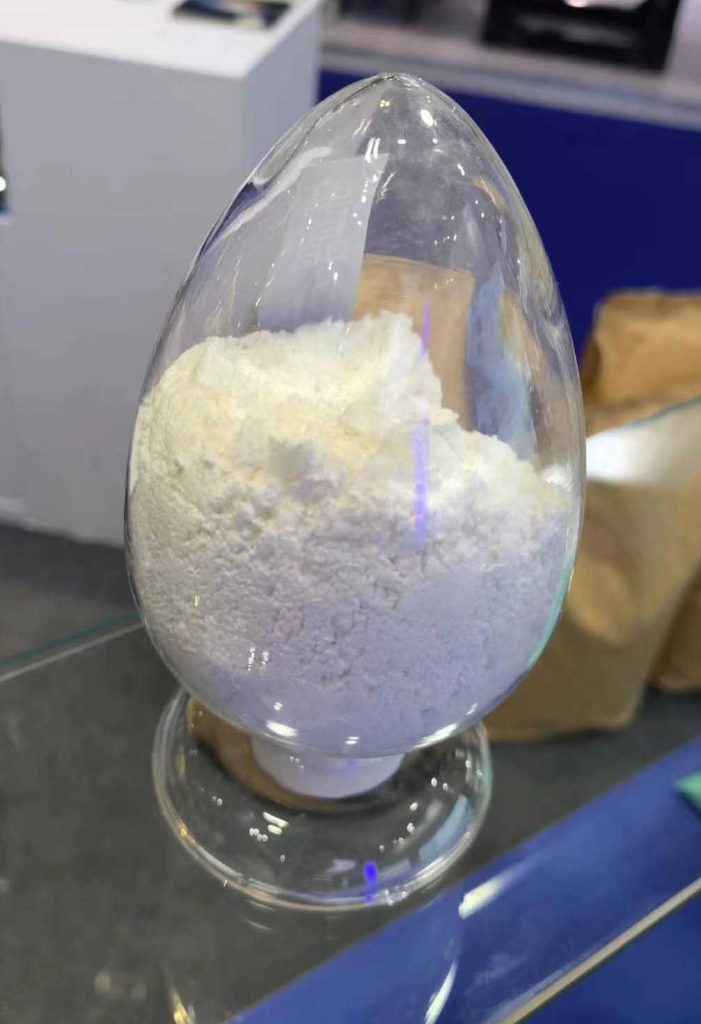Polysorbate
What is Polysorbates?
Polysorbate is a group of emulsifiers commonly found in pharmaceuticals, food preparation and oil drilling fluid. These serves as a nonionic surfactant and emulsifier in these various industries. Sorbitan Stearate substances are mainly composed of fatty acid esters of polyethoxy sorbitan. Polysorbate is a hydrophilic nonionic surfactant derived from polyethoxylated sorbitan and oleic acid. It is used because of its emulsifying and surfactant capabilities.
Polysorbate falls under the category of amphipathic, nonionic surfactants derived from ethoxylated sorbitan or isosorbide. Apart from food applications, Polysorbates are also employed in cleaners and personal care products, where they act as fragrance ingredients, emulsifying agents, and surfactants.
Synonyms
Sorbitan Stearate, a class of emulsifiers widely used in pharmaceuticals and food preparation, go by various synonyms in different contexts. Some commonly polysorbate 80 substitute include Polyethylene oxide sorbitan monooleate, Monitan, Polyoxyethylene sorbitan oleate, and Sorlate.
Names and Identifiers
Polysorbates are commercially available under distinct brand names, each offering its specific formulations. Some of the well-known brand names for poly 80 include Kolliphor, Scattics, Alkest, Canarcel, and Tween. These brand names help differentiate and promote their unique products, which may have varying concentrations, applications, and usage guidelines.
Chemical and Physical Properties
Certain chemical and physical features are what define Sorbitan Stearate as unique substances. In terms its physical appearance, it is most often seen as a viscous liquid that maybe in yellow to yellow-green in color. It has a boiling point that is greater than 100 degrees Celsius. It’s Chemical Abstracts Service Number is 9005-64-5.
In terms of density, polysorbates have a value of around 1.1 grams per milliliter. It has been determined that one mole of polysorb has a molar mass of 1227.54 g/mol. The exact configuration of several sorts of atoms that make up a single molecule of this substance is represented by the molecular formula for polysorbates is written as C58H114O26.
How do Polysorbates Work?
Because of its distinct molecular structure and content, Sorbitan Monolaurate are excellent emulsifiers. The interaction of stearic acid, sorbitol, and ethylene oxide yields these synthetic compounds. Nonionic surfactant has both hydrophilic and hydrophobic properties. poly 80 are able to interact with both water and oil molecules because to their dual nature.
When you add poly 80 to a mixture of oil and water, they work well because they keep the two different substances from mixing. The hydrophilic end of the molecule’s job is to align with water molecules, while the hydrophobic end links with oil molecules. Because they can make a bridge between water and oil, Sorbitan Stearate can lower the surface tension between the two.
So, polysorb make it easier to mix oil and water, which makes oil-in-water emulsions stronger. These emulsions are made when the oil drops are spread out evenly in the water phase. This makes the mixture solid and homogeneous. This trait is useful in many situations, including the food production or oil drilling products, where emulsions are used to great effect to make things.
What are Polysorbates in?
Both oral drugs and topical creams, lotions, and ointments make extensive use of Sorbitan Monolaurate in their compositions. They help make medications that aren’t water soluble more soluble, which increases bioavailability and guarantees uniform drug distribution. poly 80 are used as surfactants in the cosmetics industry to aid in the stabilization of oil and water emulsions found in products like lotions, creams, and makeup. They allow for the uniform dispersion of constituents, which ultimately improves the dish’s feel and visual appeal.
Without polysorbates, there would be no food business. They make ice cream and other cold treats smoother and easier to eat by stopping ice crystals from forming. They improve emulsification and preserve consistency in foods like shortenings, baking mixes, icings, and canned vegetables.
polysorb are often employed as dispersion agents for fat-soluble vitamins in nutritional supplements and fortified food items. They aid in the consistent and precise dosage of these vitamins by spreading them throughout the product. Some liquid items, such salad dressings and sauces, have Sorbitan Monolaurate added to them so that they will better emulsify when shaken or blended. This maintains a uniform and smooth texture for the final user by blending the components thoroughly.
Types of Polysorb
Various varieties of polysor bates are named using a numbering system that denotes the predominant fatty acid and the total number of oxyethylene groups in the molecule. The fatty acid and the amount of oxyethylene groups in the molecule allow producers to choose the most appropriate variety of poly 80 for the intended use.
Polysorbate 20
Polysor bate 20 is referred as Polyoxyethylene Monolaurate. Polyoxyethylene is a chain of repeating oxyethylene units, which are ethylene oxide groups. The number 20 following polyoxyethylene indicates that there are 20 such oxyethylene groups in the molecule. These form the hydrophilic part of the Sorbitan Stearate molecule. Monolaurate has the major fatty acid associated with the Sorbitan Stearate molecule which is lauric acid. This answers the question of what is Sorbitan Monolaurate 20.
Polysorbate-20 is a unique molecule because it has both groups that like water and groups that don’t. It can dissolve in water because it has oxyethylene groups. It can also dissolve in oils and fats because it has lauric acid. Because Sorbitan Stearate 20 is amphiphilic, it can be used as a stabilizer and a lubricant in hair products.
Poly sorbate 40
Polyoxyethylene monopalmitate is another name for Poly sorbate 40. This Poly sorbate comes in yet another kind. Palmitic acid is the primary fatty acid linked to Polysorbate 40 in monopalmitate. Palmitic acid is a heavy fatty acid that is found in both palm oil and animal fats. Like the fatty acids in other poly 80, the palmitic acid in Polysorbate 40 doesn’t like water. Poly sorbate 40 is called “amphiphilic” because it has both oxyethylene groups, which attract water, and palmitic acid, which repels water. Because of this, it can be used very well as a detergent and to keep an emulsion stable.
Poly sorbate 60
A common surfactant is Polyoxyethylene monostearate, which is also called Sorbitan Monostearate 60. The most common form of stearic acid in Polysorbate 60 is monostearate. Stearic acid is a heavy fatty acid that is found in both animal fats and veggie oils. Like the fatty acids in other Polysorbates, the stearic acid in Polysorbate 60 does not mix well with water. What does polysorbate 60 mean? Stable oil-in-water emulsions can be made, and the end product’s spread and feel are both better. Polysorbate 60 helps spread out and stabilize essential oils and other lipophilic substances in food. It also makes some medicines easier to dissolve and more bioavailable.
poly sorbate 80
Polyoxyethylene monooleate is another name for this. Oleic acid is a monooleate. Monounsaturated fatty acids like oleic acid are prevalent in vegetable oils like olive oil. The amphiphilic character of Sorbitan Monolaurate 80 is a result of the interaction between the hydrophilic oxyethylene groups and the hydrophobic oleic acid segment.
How to Tell if a Product Has Polysorbates
To determine if a product contains poly 80 you can simply read the label and search for that ingredient. Sorbitan Monolaurate 20, polysorbate 40, polysorbate 60 and polysorbate 80 substitute are some known types of Sorbitan Monostearate, along with their numbers. They may also be referred to as Liposorb, Tween 20 or PEG sorbitan laurate under brand names.
By scanning the packaging for these words or numbers it becomes easier to identify whether the product includes Sorbitan Monostearate or not. These compounds are commonly utilized in industries such, as pharmaceuticals, food production, skincare products and personal care items.
Risks Associated with Polysorbates
There have been concerns raised about substances, such, as poly sorbate 80 in this particular product, which could potentially be harmful to health. People worry about issues like cancer, skin reactions, developmental toxicity and reproductive toxicity. A major concern is that polysorbates can emit cancer causing chemicals like ethylene oxide and 1,4 dioxane during a chemical process called ethoxylation. These carcinogens have the potential to enter the Sorbitan Monostearate.
The usage of polysorbates has been associated with side effects including fatigue, diarrhea, neutropenia, asthenia and anemia. It’s important to note that polysorbates themselves do not cause cancer; however when combined with chemicals that’re carcinogenic the risk of developing cancer may increase.
The manufacturing process of Sorbitan Monolaurate and their potential contaminants are the areas of concern. Regulatory agencies closely monitor the use of polysorbates, in products to ensure all necessary safety measures are taken. By using products containing polysorbates within the established safety limits the likelihood of health problems can be minimized.
Conclusion
Polysorbates are a type of surfactant utilized in industries such, as healthcare, food processing, beauty and cleaning. These molecules possess both water loving and water hating properties making them effective in stabilizing emulsions and blending water based and oil-based chemicals. Different types of Sorbitan Monostearate exist, with the numbers following their names indicating the fatty acid involved. The number of oxyethylene groups present in the molecule.
Encountered polysorbate variants include Sorbitan Monolaurate 20 polysorb 40 Polysorbate 60 and poly sorbate 80. Polysorbate 20 is typically linked to acid Polysorbate 40 to acid polysorb 60 to stearic acid and polysorbate 80 substitute to oleic acid.
These emulsifiers play a role in maintaining product stability aiding dissolution processes and ensuring shape and consistency. However, it is important to be cautious about impurities or manufacturing methods that could pose health risks. For instance, toxins like ethylene oxide and 1,4 dioxane may be present in some products containing Sorbitan Monolaurate. Adhering to safety standards and regulations is essential, for minimizing these risks when using polysorbates.


